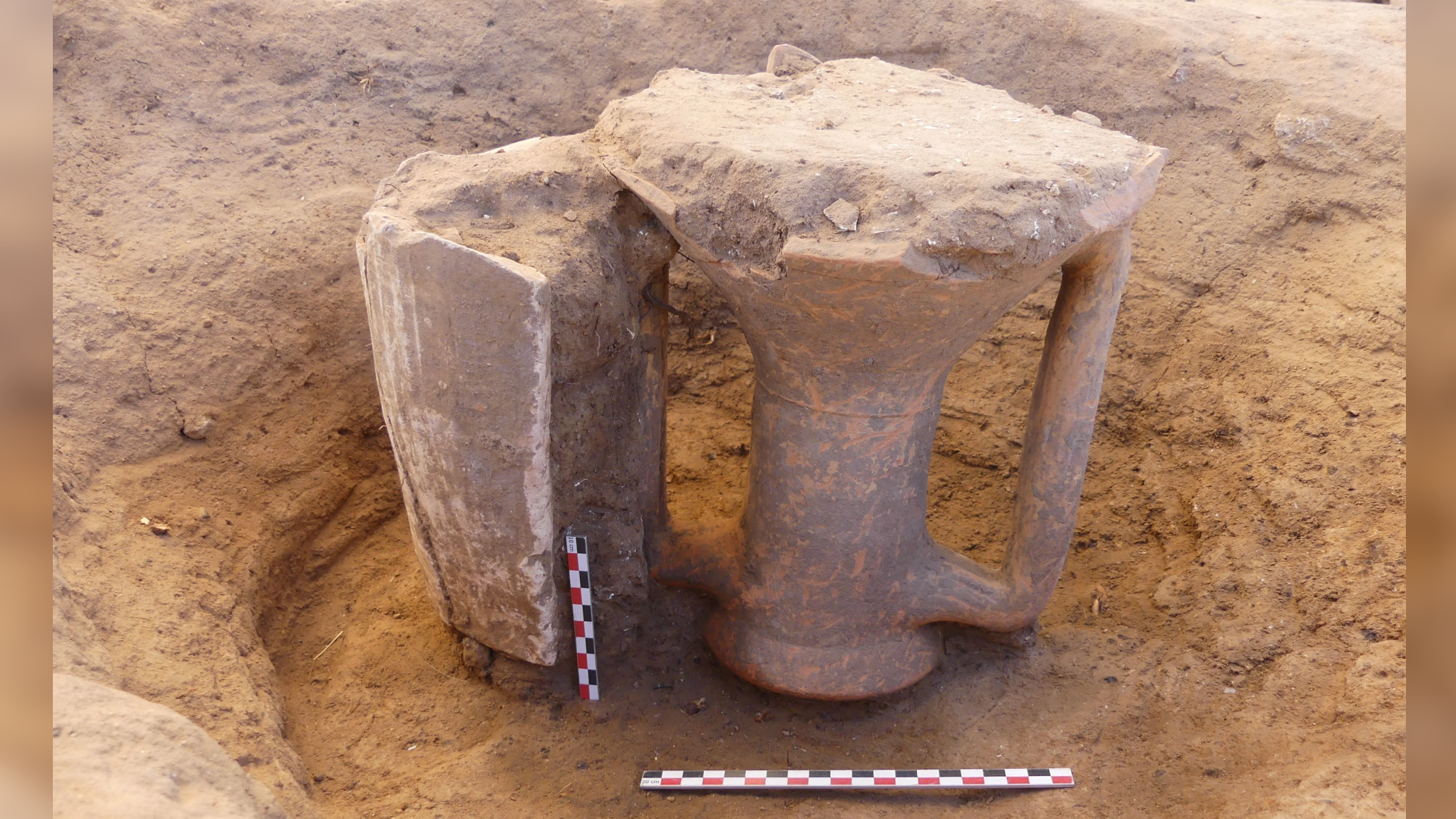French archaeologists uncover 'vast Roman burial area' with cremation graves 'fed' by liquid offerings
A massive Roman cremation cemetery in France is shedding light on diverse burial practices.

Archaeologists excavating in the French Riviera have uncovered a massive Roman cremation cemetery. Careful work at the site has revealed the step-by-step process the Romans used to cremate their dead and honor them in the afterlife.
More than 160 cremation graves were discovered at the ancient site of Olbia, which began as a fortified Greek settlement around 350 B.C. in what is now the south of France. The geographer Strabo mentioned Olbia was a city of the Massiliotes — the people of nearby Massilia (modern-day Marseille). When Marseille was captured by Julius Caesar in 49 B.C., Olbia became a Roman city focused on trading and thermal baths.
All of the cremation graves date to Olbia's Roman period, between the first and third centuries A.D., and show the different ways people at the time dealt with their dead, according to a translated Oct. 29 statement from INRAP (the French National Institute for Preventative Archaeological Research).
For many of the deceased, the cremation process began when relatives put the dead body on a wooden stand built over a square pit. The heat of the pyre caused the stand to collapse and the bones to whiten, twist and crack, according to INRAP. Glass objects melted, bronze artifacts warped, and the ceramics were tinged by soot.
"A distinctive feature at Olbia is that most of [the graves] are surrounded by a libation channel for liquid offerings (wine, beer, mead) to honor the deceased or ensure their protection," according to the statement.

These libation tubes were made from repurposed amphorae that stuck out of the grave, even after it was covered with roof tiles and filled in with dirt. The tubes allowed families to visit their loved ones and symbolically feed them on Roman feast days for the dead, such as the Feralia (Feb. 21) and the Lemuralia (May 9, 11 and 13).
At Olbia, some of the cremation pyres were turned directly into burial sites, while others were partially or fully emptied. But while the typical Roman custom was to collect bones in glass, ceramic or stone urns before burying them, at Olbia, many of the bones were piled in small heaps or placed in a perishable container, which may suggest social or cultural differences within the city's population, according to INRAP.
"These discoveries remind us that ancient funerary rites were rich, varied, and imbued with multiple meanings, some of which remain mysterious even today," INRAP representatives said in the statement.
Roman emperor quiz: Test your knowledge on the rulers of the ancient empire

Kristina Killgrove is a staff writer at Live Science with a focus on archaeology and paleoanthropology news. Her articles have also appeared in venues such as Forbes, Smithsonian, and Mental Floss. Kristina holds a Ph.D. in biological anthropology and an M.A. in classical archaeology from the University of North Carolina, as well as a B.A. in Latin from the University of Virginia, and she was formerly a university professor and researcher. She has received awards from the Society for American Archaeology and the American Anthropological Association for her science writing.
You must confirm your public display name before commenting
Please logout and then login again, you will then be prompted to enter your display name.


